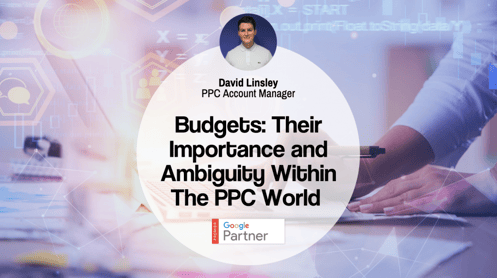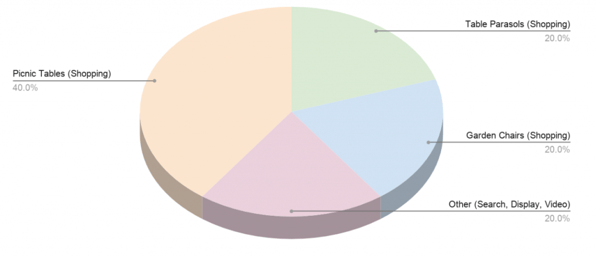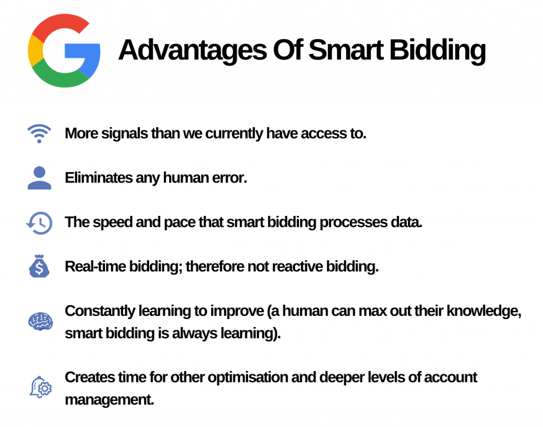
As an account manager; one of the largest topics I encounter with clients is budget. It should be an easy one, right? After all, budgeting is something we do every day, whether we’re allocating spends towards our weekly food shops or saving for a brand new Tesla. The answer, unfortunately, is not necessarily.
A lot of the time when it comes to talking targets, business owners will have a ballpark figure in mind. It’s typically a fairly tangible topic on which we can both agree and understand. Budgets are more of a grey area. The answer I usually receive when I ask how much a client would like to spend each month is, “I’m willing to put in as much as required, so long as I get the return”. For the most part, budgets are difficult to gauge and justifying what is feasible and what isn’t can be a challenge; but that’s our job as an agency to manage that expectation.

Managing budgets effectively can require a lot more consideration and preemptive thinking than you may initially assume. Depending on the type of business you own, the competition to bid on certain keywords can either be suitably tame or inordinately excessive.
It’s up to us as account managers to figure out what constitutes a high-quality search term and to what extent it would be worth bidding on to bring a reasonable return. If you’re a solicitor company where competition is particularly high, but the return is also high, then it may make sense to bid £3.00 on a specific keyword. For other businesses, say for example a bespoke pottery store where the return is lower, that may be an extortionate bid on a more niche keyword. We need to weigh up what is attainable for our clients and translate that to fit into a reasonable budget.
Establishing Traffic Levels, Competition & Bids
As a client, you’ll want something that’s affordable for you and your business. That being said, Google doesn’t particularly care about that part: Fortunately, we do.
If you’re a client selling outdoor furniture, you’re most likely going to have certain products that sell better and have a higher return than others. Take picnic tables and parasols for example. If we do a quick search in the Google Ads Keyword Planner, we can see that both of the following search terms yield a similar level of monthly searches, competition and a fairly low historical average cost per click. Generally speaking, garden picnic tables will bring a higher level of return than a separately bought table parasol. Naturally, we’re going to want to push more spend into a campaign housing the picnic tables so that we can get the most out of our budget.

Choosing The Appropriate Campaign Type:
Before we do this, we need to consider which campaign types would be most suitable for the target market. I’d argue that picnic tables are more of a considered purchase, requiring some research and thought before the customer reaches full purchase intention. Imagery is a great way to capture this sort of traffic, those of whom may already have an idea in mind. As a customer, you’re going to want to click on an ad that meets all of the criteria you’ve previously researched. Shopping ads conform to this by offering a simple product image, description and price. In this case, this is where search ads fall short and may result in a lot of blind clicks and wasted spend.
Extraneous Variables To Consider:
There’s likely to be external factors that will have an impact on performance that may or may not work in your favour. If we use the dreaded C word as an example and refer back to our beloved outdoor furniture store, it’s feasible to assume that more people are going to want to buy picnic tables due to spending more time at home (or at least we’d hope). Naturally, you’d expect competition to soar and in turn, bids to rise. If we’re careful about which search terms we choose to capitalise on, then we have high potential to do well and we may want to push more budget into key areas. On the contrary, we also have factors like seasonality to consider. If we’re caught up in another Beast from the East type situation, then we may want to pull back the budget on picnic tables unless your target market is Inuits.
Weighing Up The Findings:
Taking the information we’ve just explored, we may want to allocate budgets in a preemptive manner as an initial foundation. Using the example of an outdoor furniture store; let’s say we have three main products that we’d like to focus on and we’d like to set up a campaign for each. Once we’ve established our main focal points, we can begin to visualise how we’d like to advertise each product type and organise the structure of our campaigns. If we approach it using a basic pie chart, we can get a better idea of how our budget will be spread out.

What’s Next?
So we’ve got an estimate for our starting budget. We’re happy with our strategy and campaign structure and we’re confident about how we’re going to allocate our budget across each campaign. That’s everything, right? Well, yes and no.
The Wonders & Implications Of Smart Bidding In Relation To Budgets:
Unless you’ve been living under a rock, you’ll be familiar with the fact that smart bidding is now a hegemony over our very existence. Although it is undeniably the way forward for most clients, it also relies on a certain level of data and proactivity to sustain. Let’s run through the benefits of smart bidding briefly:

One of the most commonly asked client questions is, “Why isn’t said smart campaign picking up traffic or performing like it should be doing”. The answer is usually one of the following:
- The campaign hasn’t had enough time to gather the necessary data to perform optimally.
- There isn’t enough budget running through the campaign to gather the required data.
- A mixture of both of the above.
Google recommends there to be at least 30 conversions running through a campaign per month in order for the smart bidding algorithm to work to its full potential (Up to 50 for Target ROAS). How do we achieve this target? With enough data and signals running through the campaign. How do we achieve the data and signals? You guessed it — with a reasonable amount of budget flowing through the campaign. Google even suggests that daily budgets should be at least 20-30% higher than a campaign’s average daily spend in order to take full advantage of Smart Bidding’s drive.
This doesn’t mean that a smaller business with less budget to work with and less data flowing through the account is doomed to failure by any stretch of the imagination. It simply implies that it’s likely to take longer to acquire the required information. Luckily, that’s where we as an agency come in to help accelerate the process and get your accounts in tip-top condition. Thanks to real-time bidding, we’re able to focus more of our efforts into analysing and optimising areas that require close attention.

Ad Rank And Its Importance In Relation To Budgets:
By Google’s definition, ad rank is calculated for every ad in an auction and determines an ad’s position, or if it’s even eligible to show at all. The ad auction is a process that decides which ads will appear and in which order. Ad rank is generally calculated based on bid amounts, quality of the ad and landing page experience. Theoretically, even if a competitor bids higher, your ad can still win a higher position with a lower bid provided the ad quality and landing page experience is up to scratch. There are many components that make up a high-quality ad, and by optimising these for you, we can help to reduce your overall cost-per-click and effectively help you to gain a competitive edge and get the most out of your budget.
To Summarise:
While budgets may be one of the most common topics of discussion, they’re not always the most straightforward to decipher — but that’s okay. They should be looked at as a flexible strategy, rather than a static roadblock. Performance doesn’t always manifest immediately and will vary drastically from client to client, but with all things considered, it’s not a race; patience is key. Effectuating a preemptive approach and capitalising on gaining competitive advantage will stand you in good stead for reaching your targets.
Wondering how you can stay within budget, yet still meet targets in your account? Fill in the form below NOW.
Tags:
Digital MarketingJanuary 21, 2021